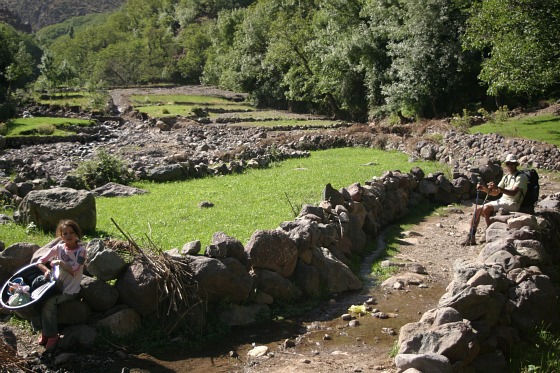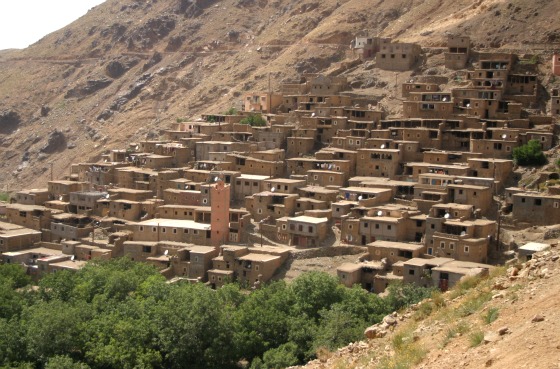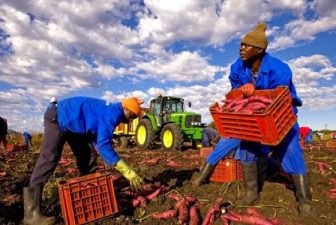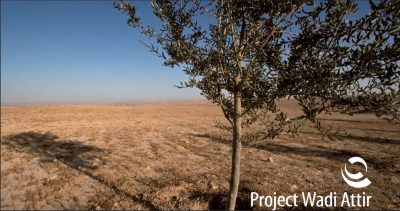 The verdant valleys in the Toubkal National Park stand in stark contrast to the dry, red mountain sides.
The verdant valleys in the Toubkal National Park stand in stark contrast to the dry, red mountain sides.
After my last visit to Toubkal National Park in Morocco’s high Atlas Mountains, where I ungracefully scrambled to the summit of its namesake in order to prove to myself and the world that I am cool enough to climb to the highest point in North Africa, I couldn’t walk properly for days after.
Over the weekend, I went back via the Ourika Valley. But this time, while there were moments of challenging hiking, my focus was on understanding the Berber people who live in small iron-red homes tucked into the side of steep slopes. With my talented mountain guide leading the way, I trekked across a handful of loose scree peaks and verdant valleys, occassionally stopping to drink mint tea with the locals, and admire their terraced agriculture plots. Naturally, what seems “so sustainable” has a more complicated background.
I’m guilty of assuming that anything ethnic is more sustainable than the marauding gringo way. And often, by virtue of its scale, it is. But ethnic people whose survival depends more on knowledge of the land than on an ability to name the parts of a sentence also make mistakes.
Terraced agriculture is very labor intensive. It is first necessary to dig ledges into the side of slopes, which are typically steep, and then a sophisticated irrigation system has to be put in place.
It is also recognized as a sustainable form of agriculture practiced in the Andes for hundreds of years, as well as in Viet Nam, Bali, and other hilly countries, since it conserves water, reduces soil erosion, maximizes arable land, and decreases surface runoff.
Verdant valleys
Each of the villages we encountered while looping from Oukamidene, a high altitude winter ski resort, west, south, east, and then back again, manages a lush grove of walnut, apple, and fig trees, along with potatoes, wheat, olives, and a host of other produce.
These fields are carefully irrigated with a system reportedly installed by the Spanish. Melted snow and river water is channeled into targas. These are long concrete troughs, of sort, that have numbered metal trap doors. Each of the men in the village take turns irrigating the crops by lifting the trap doors and allowing water to flow in steps down each successive ledge.
This according to my guide, who has worked for several European tour operators and spends part of his life in the United Kingdom. Born and raised in Aremd, one of the villages that seem to cluster around Mt. Toubkal, he has seen the villages change. And they are not all equal.
The risks
It is a carefully-planned system that ensures each crop is placed at its ideal elevation. It is the system that has been in place for hundreds of years. But it is endangered.
In a paper presented to the 12th Biennial Conference of the International Association for the Study of Commons, Bernadette Montanari – then an Ethnobiology PhD student – and consultant Lars Soeftehard warned that Atlas mountain natural resources are declining because of over-harvesting and population pressure.
They added that the situation is made worse by lack of secure land tenure, political representation, or empowerment.
One old man, who is bowlegged now and less able to trek up and down the mountain passes, works at the ski resort a couple of hours walk away from his village. This year, he says, times are hard because his village did not vote for the man in charge and are therefore not privy to his favors.
Much of the food grown is used at home, particularly wheat, which is processed in a pre-industrial style (with mules trained to stomp the wheat on a concrete slab in order to facilitate the easy separation of the edible part of the plant from the remaining hay) and used to make bread. The remaining produce is sold at the market. On Mondays, especially, locals far and wide flock to a town on the edge of the Ourika Valley well-known for its market.
This life is hard, endangered, but more honest somehow. While many of the locals live in filthy dirty clothing and are missing their teeth, and while they toil hard in the high sun, they are a quiet and humble people whose way of life is prey to tourist traffic, resource degradation, and climate change. But they are always ready to offer a lovely cup of hot tea to the curious, weary traveler.
More travel, nature, and food stories from Morocco:
A Side of Sewage with Dinner in Morocco
Making Cobras Swoon is not so Charming
Rocking the Eco-Toubkal in Morocco
all images via Tafline Laylin






JC
colonial epic over my ass